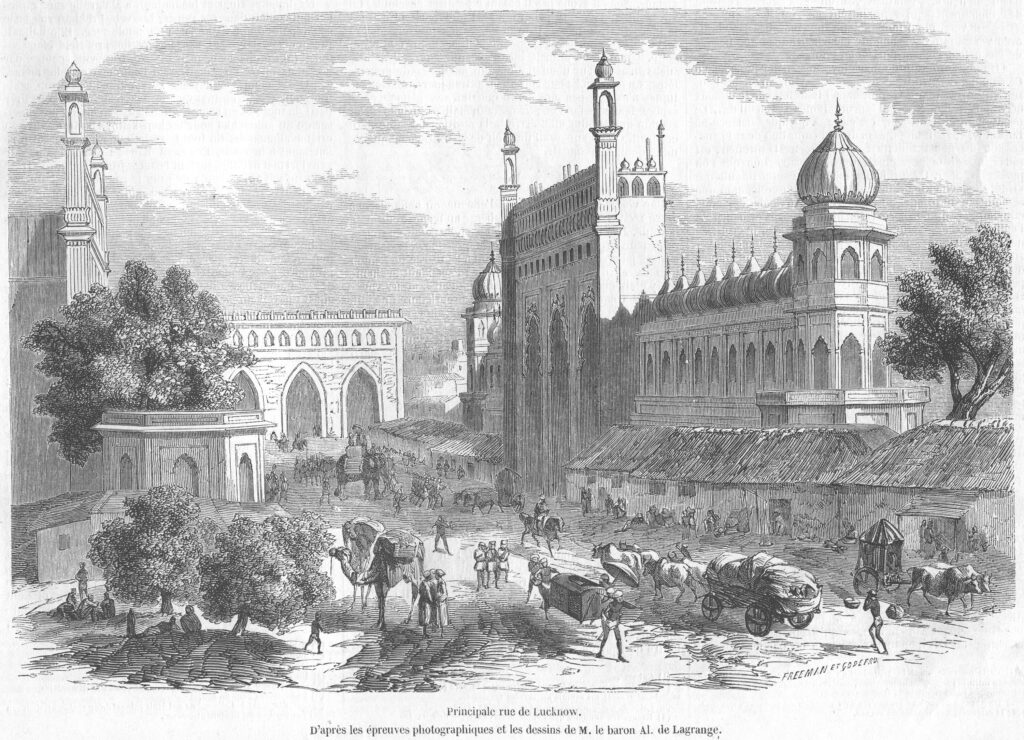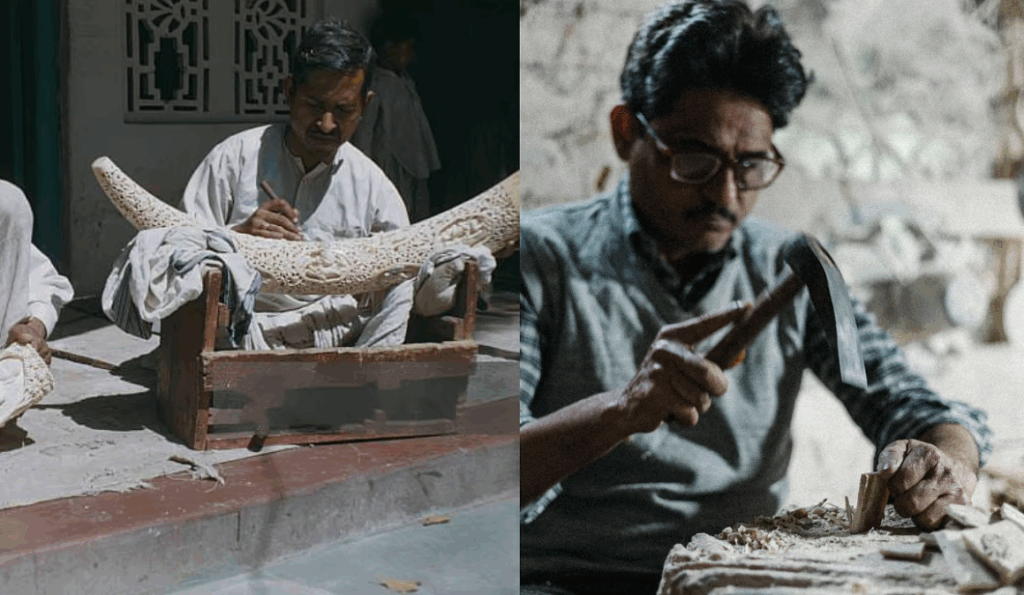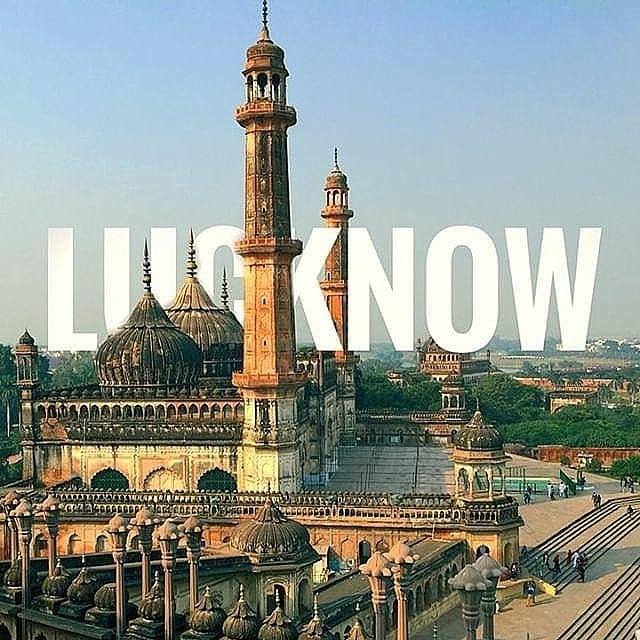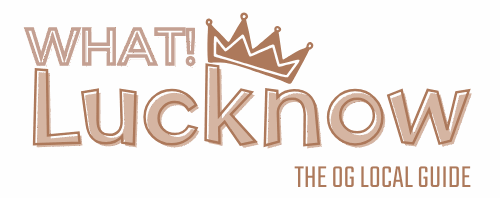Lucknow, formerly known as Awadh, is the capital city of the state of Uttar Pradesh. The city is a paradise for folks who are keen about history, culture, and craft. Lucknow gives a visitor the best hospitality as the city welcomes you with boards saying ‘Muskarein Aap Lucknow Mein Hain’ and will actually give you a lot of reasons to smile. From monuments to craft, every inch of the city tells a story. But what is Lucknow name story?
People here are fond of stories and sometimes are stories themselves as they are deeply rooted in cultures and heritage. The depth and detailing of craftsmanship can be found in this city. Chikankari embroidery is famous all over Northern India for its refined designs and patterns. Lucknow can never disappoint a visitor when it comes to food.

The culinary heritage of the city includes kebabs, biryani, and kulfis, which are not only loved all over India but across the globe. The polite speech and cultural etiquette showcasing the real Adab and Tehzeeb reflect the city’s noble past.
Lucknow – Throughout The Years
Lucknow was known as Awadh in ancient times. The city was originally a part of the Kosala Kingdom and had Ayodhya as its capital.
Many legends associate Lucknow deeply with the ancient historical era and believe that the city’s origin lies with Lakshmana, the brother of Lord Rama. It is also believed that he founded Lakshanapur(modern-day Lucknow)
As we go down the history line, Lucknow gained significance in the Mughal era as many Mughal Emperors appointed Nawabs to govern Awadh.
Lucknow eventually became the capital of Nawab Asaf ud-Daula in 1775.
Post the Mughal Era, the Nawabi Era commenced. This Era is also known as the golden period of Awadh, now known as Lucknow.
Many art forms, like poetry, music, dance, and architecture, developed in this era. The Bara Imambara, Chhota Imambara, and Rumi Darwaza were built around this era. The Nawab left the influences of Persian culture and Shia Islam culture as the era ended.
The British Era in Lucknow began with the annexation of Wajid Ali Shah, who was also the last Nawab of Lucknow.
Lucknow played a very important role in the independence struggle as it became an important administrative centre for the British. Many protests were also held here against colonial rule. It is now a strong reflection of cultural heritage and hospitality.
Lucknow – Through An Artistic Lens
Lucknow has been a hub of exquisite art and culture. Many popular art forms, which we now see taking up the global stage, have been mastered in Lucknow.
Kathak dance is one of the eight classical dance forms in India, developed with grace under Nawab Wajid Ali Shah, who was himself a choreographer and dancer.
Hindustani classical music also thrived in the royal courts of Lucknow. Thumri, Ghazal, and Dadia, which a lot of people try to learn and vibe on, originated from Lucknow. Legendary singers and poets like Begum Akhtar and Ustad Bismillah Khan were also born in Lucknow and developed their roots here.

Lucknow’s heritage does not stop here! The city has a great contribution to decorative arts. Chikankari is a traditional form of hand embroidery, and it is loved by women. Lucknow offers a variety of chikankari. The craft can be seen with a closer lens in the city.
Zardozi is also a very popular art form of Lucknow. It is made out of silver and golden threads. It used to be a royal symbol, and now it can be on bridal and formal outfits. Literary arts have also flourished in the City of Nawabs.
Lucknow used to be a leading centre of Urdu literature during the 18th and 19th centuries. Nazms, Ghazals, and Marsiyas add to the literary heritage of the city.
Dawat-e-Ishq: Lucknow’s Culinary Treasure
The Nawabi influence cannot be just seen in Lucknow,it can be tasted too. Once you taste the food here, you’ll keep coming back for more. Lucknow offers one of the most addictive kinds of culinary flavours that you would want to take away with you.
Kebabs are the soul of the Lucknowi delight. From Galouti Kebabs to Shami Kebabs, you’ll drool over kebabs.
Gravies like Nihari (a slow-cooked gravy eaten for breakfast) and Korma (rich, creamy gravy made with nuts, yoghurt, and spices) add to the delicacy of the Awadhi cuisine.
You can pair your kebabs and gravies with some popular breads in Lucknow.
These breads include Sheermal, Roomali Roti, Kulcha, and Naan. When in Lucknow, never end your day without the sweet delight the city offers. Kheer, Makhan Mala,i and Kulfis will make you ask for more.

Frequently Asked Questions
What are the cultural influences on Lucknow?
Lucknow is deeply rooted in a variety of cultures. It has Hindu, Mughal, Nawab,i and British influences
Where can I eat in Lucknow?
Some popular food joints in Lucknow are Tunday Kababi in Aminabad, Moti Mahal Restaurant in Narpatkhera, and Royal Sky.
Where can I shop in Lucknow?
Lucknow has a number of bazaars. You can find high-quality chikankari in Hazratganj. You can also explore the Aminabad market.

Is Lucknow safe for women?
Lucknow is moderately safe for women. The safety of Lucknow may vary when it comes to night. However, precautions must be taken while exploring the city.
What monuments can I visit in Lucknow?
You can visit the Bara Imambara, Chhota Imamabara, and Rumi Darwaza.
What places should I not miss in Lucknow?
Janeshwar Mishra Park, Kukrail Forest Reserve, Nawab Wajid Ali Shah Zoological Park, and many more.
Conclusion
Lucknow is a vibrant place to spend time in. From culture to food, everything in this city will make you come back for more. The city has a noble past, which is easily noticeable when you interact with the locals here.
The heritage here will add to your knowledge of our diverse country. The city tells history and keeps you stuffed with delicious food.
The huge markets offering chikankari and zardozi will make the ladies drool. The Gomti River will give you peace, and the kebabs might fill up your stomach so much that it might give you a stomachache.
When you depart, the city will be ready to greet you again with boards saying ‘Muskuraiye Aap Lucknow Main Hain.’
